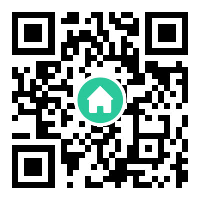In the era of seamless digital connectivity, Telegram multiple devices support has emerged as a game-changer for users seeking flexibility across platforms. Unlike many messaging apps that restrict access to a single primary device, Telegram allows simultaneous login on smartphones, tablets, desktops, and even web browsers. This feature not only enhances productivity but also redefines how users interact with their messages, files, and communities. By prioritizing cross-device synchronization without compromising security, Telegram has positioned itself as a leader in modern communication tools.
How Telegram's Multi-Device Architecture Works
Telegram's ability to function across multiple devices relies on its decentralized cloud-based infrastructure. When a message is sent, it is instantly uploaded to Telegram's servers and synchronized across all logged-in devices. This eliminates the dependency on a "primary" device, a limitation seen in apps like WhatsApp. Each device maintains an independent encryption key, ensuring that data remains secure while enabling real-time updates. For instance, deleting a chat on one device automatically reflects the change everywhere else, creating a cohesive user experience.

Security in a Multi-Device Environment
While multi-device access introduces potential vulnerabilities, Telegram addresses these through layered security protocols. End-to-end encryption (E2EE) is mandatory for secret chats, which remain device-specific and cannot be synced. For regular chats, server-client encryption combined with two-factor authentication (2FA) and active session monitoring provides robust protection. Users can review and terminate connected devices anytime, preventing unauthorized access. This balance between convenience and security has made Telegram a preferred choice for privacy-conscious organizations and individuals.
Use Cases: Where Multi-Device Support Shines
The practical applications of Telegram multiple devices are vast. Professionals can draft messages on desktops while staying responsive on mobile during commutes. Community admins manage large groups across tablets and laptops without missing notifications. Travelers access saved documents on hotel computers via Telegram Web without risking data leaks. Even content creators benefit, as they can edit posts across devices and preview layouts in real time. This versatility explains why Telegram's user base grew by 40% after expanding its multi-device capabilities in 2022.
Comparative Advantage Over Competitors
Telegram's approach contrasts sharply with platforms like Signal (limited to one mobile + one desktop) or Slack (enterprise-focused with device caps). While WhatsApp introduced multi-device support in 2021, it still requires a primary smartphone connection and lacks Telegram's file-sharing breadth (up to 2GB vs. Telegram's 4GB). Additionally, Telegram permits unlimited devices compared to Discord's 10-device cap. This technical superiority is amplified by Telegram's platform-agnostic design, which supports even Linux and legacy operating systems.
Future Developments and User Expectations
As demand for interconnected workflows grows, Telegram plans to enhance its multi-device ecosystem. Upcoming features include selective synchronization (choosing which chats appear on specific devices) and device-specific notification settings. There's also speculation about integrating IoT devices, potentially allowing smartwatches or VR headsets to function as standalone Telegram clients. However, challenges remain in optimizing battery usage for always-connected devices and preventing spam across synchronized accounts.
In conclusion, Telegram multiple devices functionality represents more than a technical achievement—it reflects a paradigm shift in digital communication. By empowering users to transcend hardware limitations while maintaining stringent security standards, Telegram continues to shape how the world stays connected. As remote work and cross-platform productivity become norms, such innovations will likely define the next chapter of messaging app evolution.












